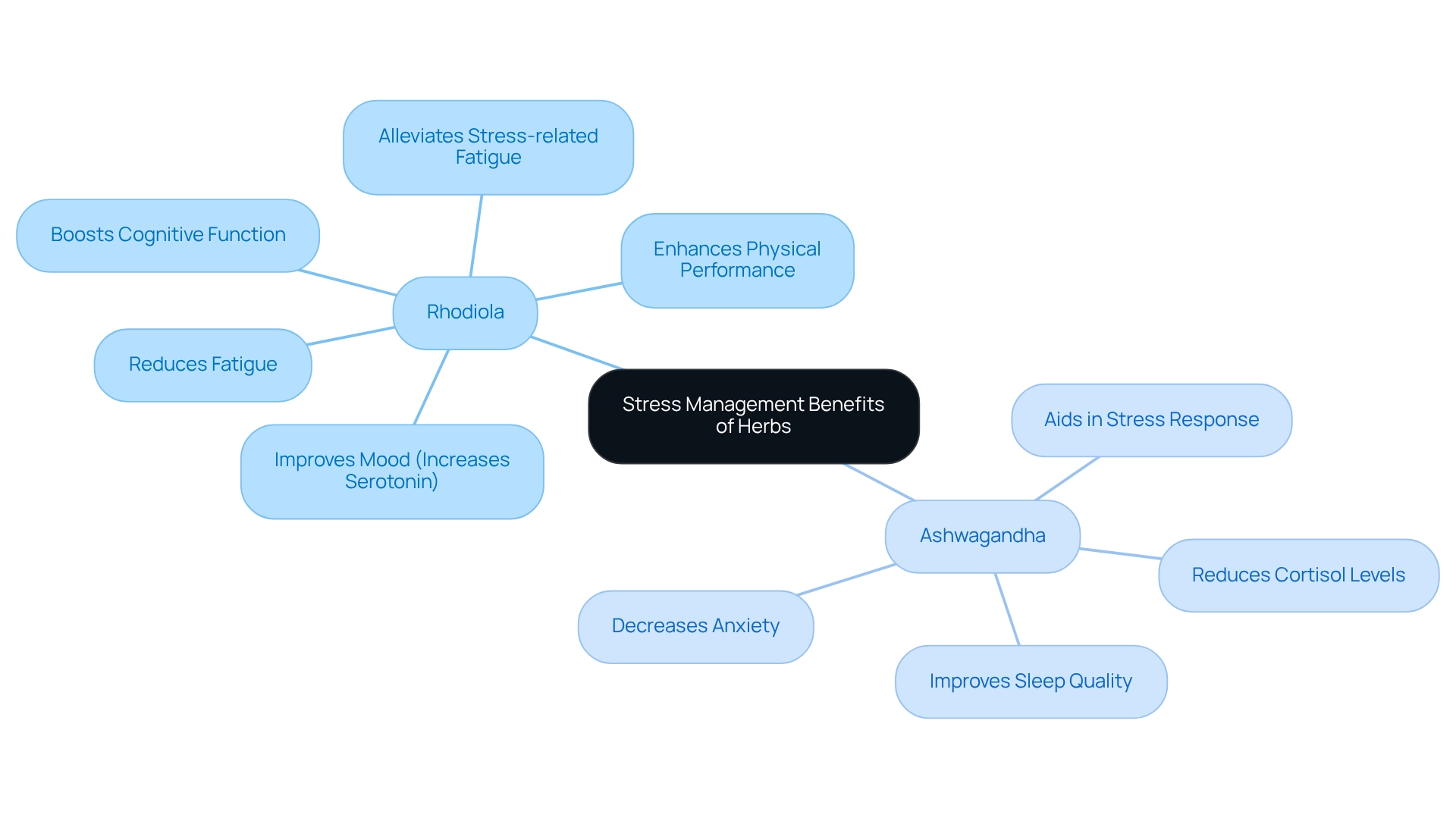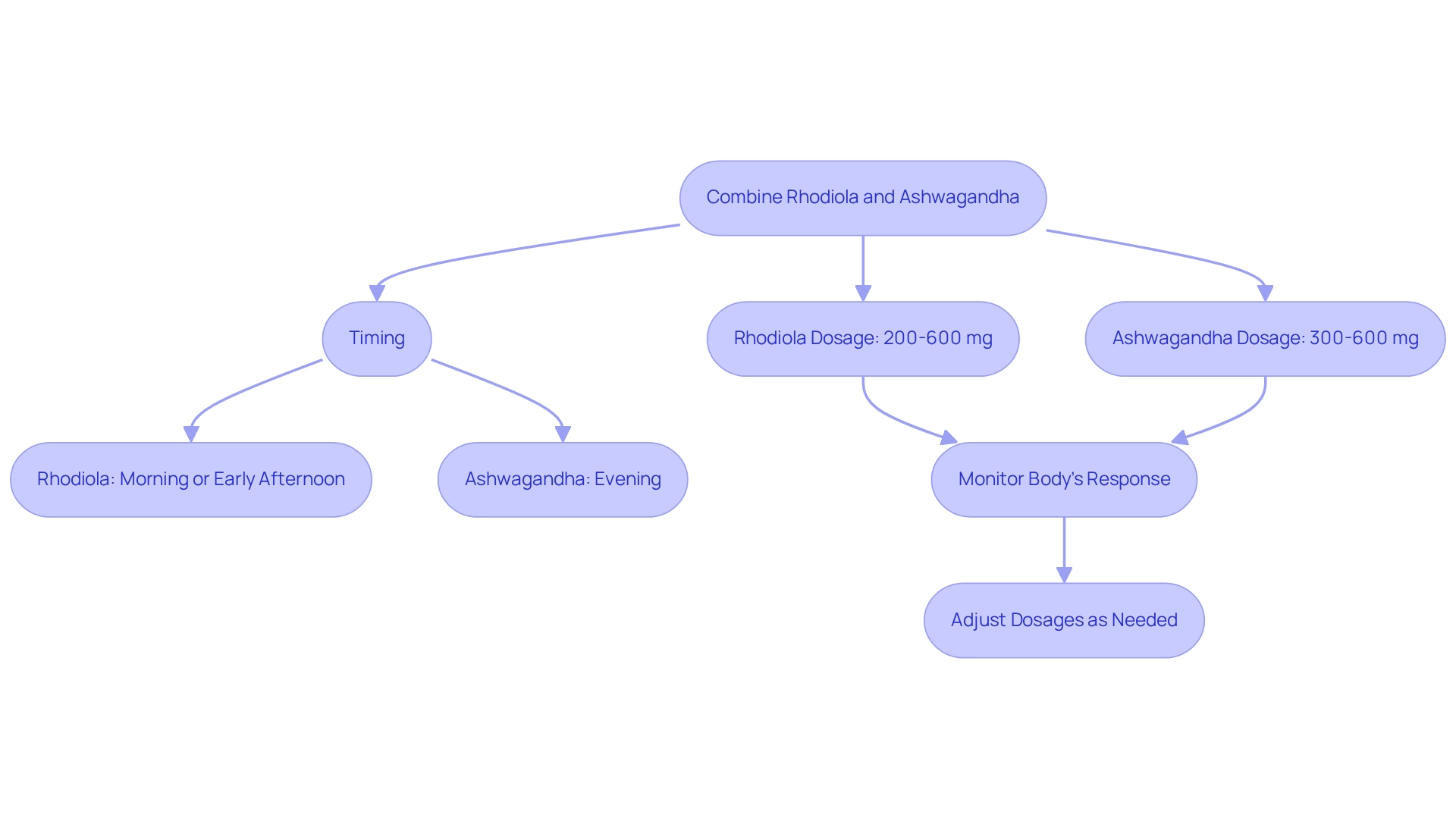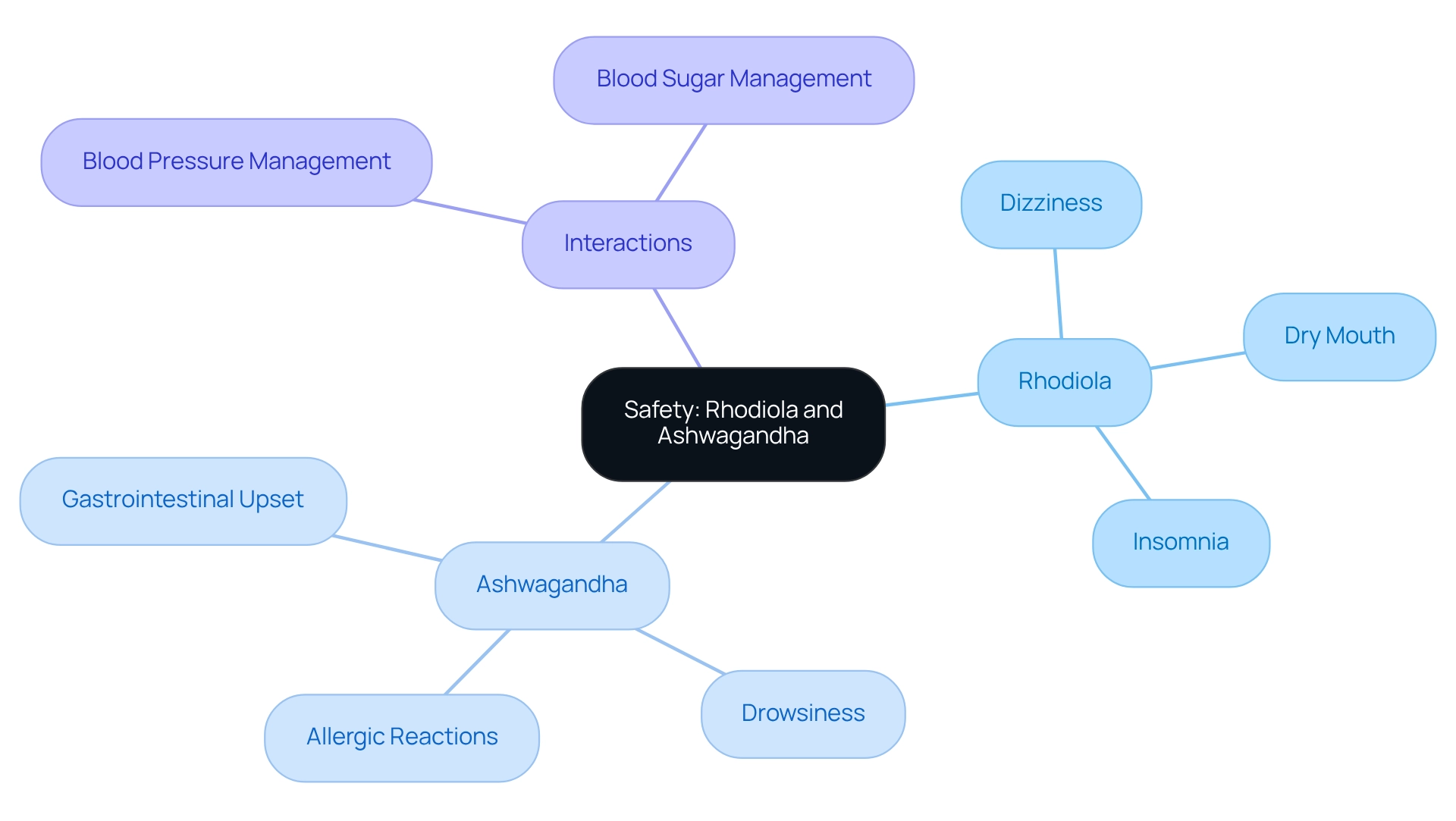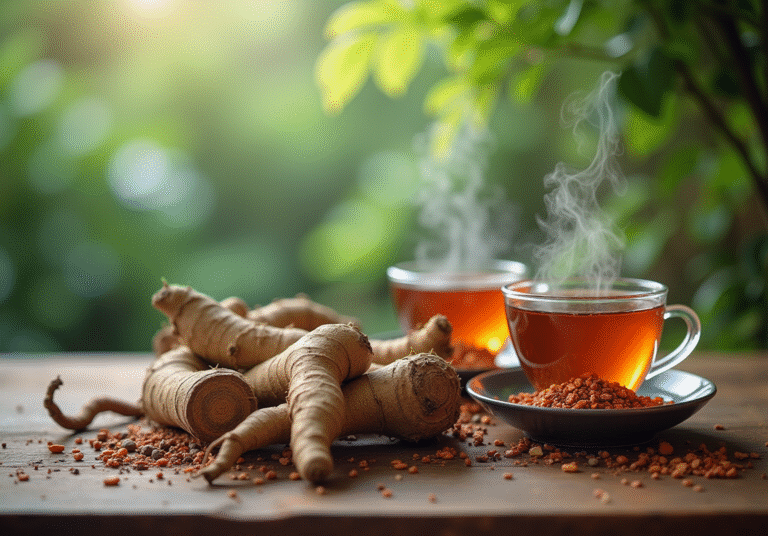Combine Rhodiola with Ashwagandha for Stress Relief Success
Overview
The combination of Rhodiola and Ashwagandha offers an effective solution for stress relief. This powerful blend merges the energy-enhancing properties of Rhodiola with the calming effects of Ashwagandha, providing a balanced approach to managing tension. Rhodiola is known to boost mental clarity and resilience, while Ashwagandha plays a crucial role in reducing cortisol levels and promoting relaxation. As a result, their synergistic use can be highly beneficial for overall well-being.
Have you considered how these natural remedies can transform your approach to stress management? By incorporating Rhodiola and Ashwagandha into your routine, you may find a more harmonious balance in your daily life. Explore further to uncover additional resources and insights on how to enhance your wellness journey.
Introduction
In a world where stress has become a common part of daily life, finding effective solutions for managing it is essential. Rhodiola rosea and Ashwagandha, two renowned adaptogens, offer powerful support in this endeavor.
- Rhodiola is celebrated for its energy-boosting effects and ability to enhance mental clarity.
- In contrast, Ashwagandha is recognized for its calming properties that help reduce cortisol levels and promote relaxation.
Together, they provide a holistic approach to stress management, merging vitality with tranquility. This article delves into the unique benefits of these adaptogens, their optimal usage, and safety considerations, guiding readers toward a balanced and effective stress relief strategy.
Understand Rhodiola and Ashwagandha: Key Adaptogens for Stress Relief
Withania somnifera and rhodiola with ashwagandha, known as ‘golden root,’ are both recognized for their remarkable capacity to assist the body in managing stress. Rhodiola is particularly renowned for its energy-enhancing qualities, which improve mental clarity and resilience against pressure. In contrast, Withania somnifera is celebrated for its calming effects, helping to reduce cortisol levels and promote relaxation. Together, these adaptogens, rhodiola with ashwagandha, create a balanced approach to tension management, merging energy enhancement with relaxation.
Have you ever considered how these herbs can support your well-being? By integrating both energy-boosting and calming properties, rhodiola with ashwagandha provides a comprehensive solution to stress. Exploring the benefits of these adaptogens may lead to a healthier response to daily pressures. As a result, you can experience a more balanced lifestyle, where stress is managed effectively while maintaining energy levels.

Explore the Benefits of Rhodiola and Ashwagandha for Stress Management
Both herbs offer distinct advantages for managing tension. Rhodiola is recognized for enhancing physical performance, reducing fatigue, and improving mood by increasing serotonin levels in the brain. Studies indicate that it can alleviate symptoms of stress-related fatigue and boost cognitive function. In contrast, Ashwagandha effectively reduces cortisol levels, aiding in the body’s response to pressure. It has been shown to decrease anxiety and improve sleep quality, making it an excellent choice for individuals dealing with ongoing tension. Together, the combination of rhodiola with ashwagandha provides a holistic approach to stress management, enhancing both mental and physical well-being.

Combine Rhodiola and Ashwagandha: Dosage and Timing for Optimal Results
When blending rhodiola with ashwagandha, it is crucial to consider the appropriate dosages and timing to achieve the best outcomes. A typical dosage for one herb ranges from 200 to 600 mg per day, while the other is usually consumed in amounts of 300 to 600 mg daily.
To maximize the benefits, it is recommended to take the stimulating herb in the morning or early afternoon. In contrast, the other herb can be taken in the evening to promote relaxation and enhance sleep quality. For optimal results, consider starting with lower doses of rhodiola with ashwagandha and gradually increasing them as needed, while carefully monitoring your body’s response to rhodiola with ashwagandha.

Assess Safety: Potential Side Effects and Interactions of Rhodiola and Ashwagandha
While these herbal supplements are generally considered safe for most individuals, it is essential to acknowledge potential adverse reactions and interactions. For instance, common side effects of Rhodiola may include:
- Dizziness
- Dry mouth
- Insomnia
particularly when taken in high doses. Similarly, Ashwagandha can lead to:
- Gastrointestinal upset
- Drowsiness
- Allergic reactions (in rare cases)
Furthermore, both herbs may interact with specific medications, such as those prescribed for:
- Blood pressure management
- Blood sugar management
Given these considerations, it is advisable to consult with a healthcare professional before beginning any new supplement regimen, especially if you are pregnant, nursing, or currently taking other medications. This proactive approach can help ensure your safety and well-being.

Conclusion
Incorporating Rhodiola rosea and Ashwagandha into a daily routine can significantly transform stress management. Rhodiola’s energy-boosting properties and its ability to enhance mental clarity complement Ashwagandha’s calming effects, which help lower cortisol levels and promote relaxation. Together, they create a holistic strategy that addresses both the physical and mental aspects of stress.
Understanding the unique benefits of each adaptogen is crucial for maximizing their impact. Rhodiola enhances physical performance and alleviates stress-related fatigue, while Ashwagandha supports mental well-being by reducing anxiety and improving sleep quality. The combination of these two powerful herbs forms a well-rounded support system for those navigating daily stress challenges.
To achieve optimal results, it is essential to consider the appropriate dosages and timing for each adaptogen. Starting with lower doses and adjusting according to individual response can help tailor the experience. Furthermore, being aware of potential side effects and interactions ensures the safe and effective use of these supplements.
Ultimately, embracing the combined benefits of Rhodiola and Ashwagandha presents an opportunity for individuals to cultivate a balanced and resilient approach to stress management. By integrating these adaptogens into daily life, it becomes possible to foster a greater sense of vitality and tranquility, paving the way for improved overall well-being.
Frequently Asked Questions
What are Rhodiola and Ashwagandha?
Rhodiola, known as ‘golden root,’ and Withania somnifera (Ashwagandha) are both adaptogenic herbs recognized for their ability to help the body manage stress.
What are the benefits of Rhodiola?
Rhodiola is particularly known for its energy-enhancing qualities, which improve mental clarity and resilience against pressure.
How does Ashwagandha help with stress?
Ashwagandha is celebrated for its calming effects, helping to reduce cortisol levels and promote relaxation.
How do Rhodiola and Ashwagandha work together?
Together, these adaptogens create a balanced approach to tension management by merging energy enhancement with relaxation.
What is the overall impact of using Rhodiola and Ashwagandha?
Integrating both herbs can lead to a healthier response to daily pressures, allowing for a more balanced lifestyle where stress is managed effectively while maintaining energy levels.






